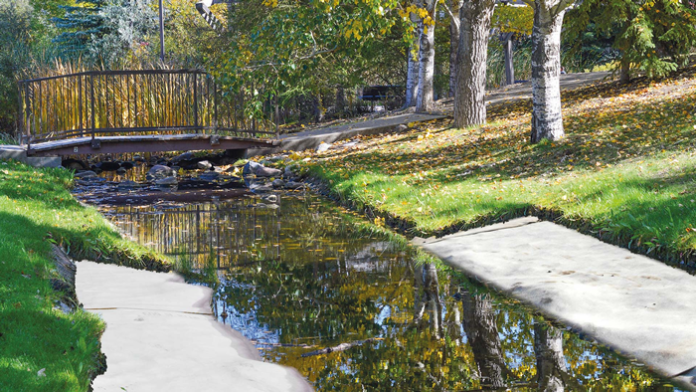The field of geosynthetics was created in many respects by manufacturers. It was manufacturers that put forth many of the engineering ideas, funded early research, supported pilot projects, innovated manufacturing processes, generated technical reports, committed to standardization, and so forth. The result of this endeavor was the development of a dynamic field, one that focuses on the only major class of construction materials created in the 20th century.
Here in Geosynthetica’s Manufacturing & Innovation Series, we wonder what challenges the 21st century will continue to bring to geosynthetics and what geosynthetic manufacturers will bring to the field.
An October 22 free webinar offers a look at one of the most intriguing developments: materials that are sustainable not only in terms of the applications they support but in their composition. This may be a surprising development from a field with “synthetics” in its name; but, as NAUE’s innovation points to, it’s actually an understandable step on the manufacturing path.
Like the development of geosynthetics themselves, these new sustainable materials simultaneously recognize a market need and provide inspiration for what is possible in our designs.
WHAT: Sustainability in Construction – Introduction of GreenLine WEBINAR
WHERE: Online
TIME: 5:00 pm CEST (11:00 am EDT)
COST: Free
REGISTER
A TRULY SUSTAINBLE GEOTEXTILE
Geosynthetica will present an interview with NAUE team members next week on this topic, but we want to point readers to the webinar first to get the full details from the company. The new GreenLine is unique. The inaugural product, Secutex® Green, looks and performs like a standard Secutex® product but is a 100% biodegradable, mechanically bonded separation and filtration nonwoven.
On October 22, the company will share facts about the material and the overall GreenLine, as well as talk about applications utilizing these materials and, importantly, what is possible.
MORE GEO: New Online Geosynthetic Drainage Tool
And that is what makes this so relevant. In the 20th century, geosynthetics improved so many infrastructure applications (in performance and cost) and made others possible. In the 21st century, that same materials development knowledge is being applied to the sustainable engineering questions that are influencing many infrastructure decisions.
Check out NAUE’s webinar on October 22 and check back in with Geosynthetica next week for more about these amazing, sustainable materials.












